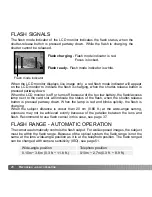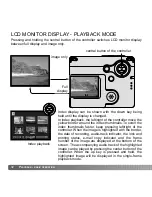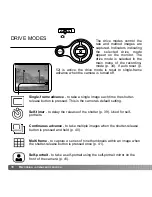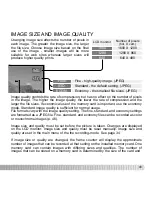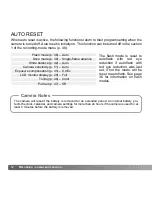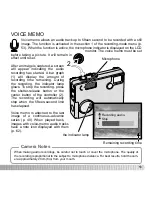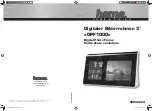
42
R
ECORDING
-
ADVANCED OPERATION
White balance is the camera’s ability to make different types of lighting appear neutral.
The effect is similar to selecting daylight or tungsten film, or using color compensating
filters in conventional photography. One automatic and four preset white-balance setting
are available with still image and movie recording. White balance is set on the main menu
of the recording-mode (p. 34) or the main menu of the movie-recording menu (p. 60).
When auto reset (p. 52) is active, the white balance will be reset to automatic white
balance when the camera is turned off.
The automatic white balance compensates for the color temperature of a scene. In most
cases, the auto setting will balance the ambient light and create beautiful images, even
under mixed-lighting conditions. When the built-in flash is used, the white balance is set
for the color temperature of the flash.
Preset white-balance settings must be set before the image is
taken. When one of the preset white-balance settings is
selected, an indicator will be displayed on the LCD monitor to
indicate the active white-balance setting; the effect is
immediately visible on the monitor. To record the ambient light,
set the flash mode to flash cancel (p. 36). The built-in flash can
be used with preset white-balance, but will create a pinkish or
blueish cast with the fluorescent and tungsten settings. The
flash is daylight balanced and will produce good results with
the daylight and cloudy settings.
WHITE BALANCE
Cloudy - for overcast outdoor scenes.
Tungsten - for incandescent lighting: household filament light bulbs.
Fluorescent - for fluorescent lighting: office ceiling lights.
Daylight - for outdoor and sunlit subjects.

